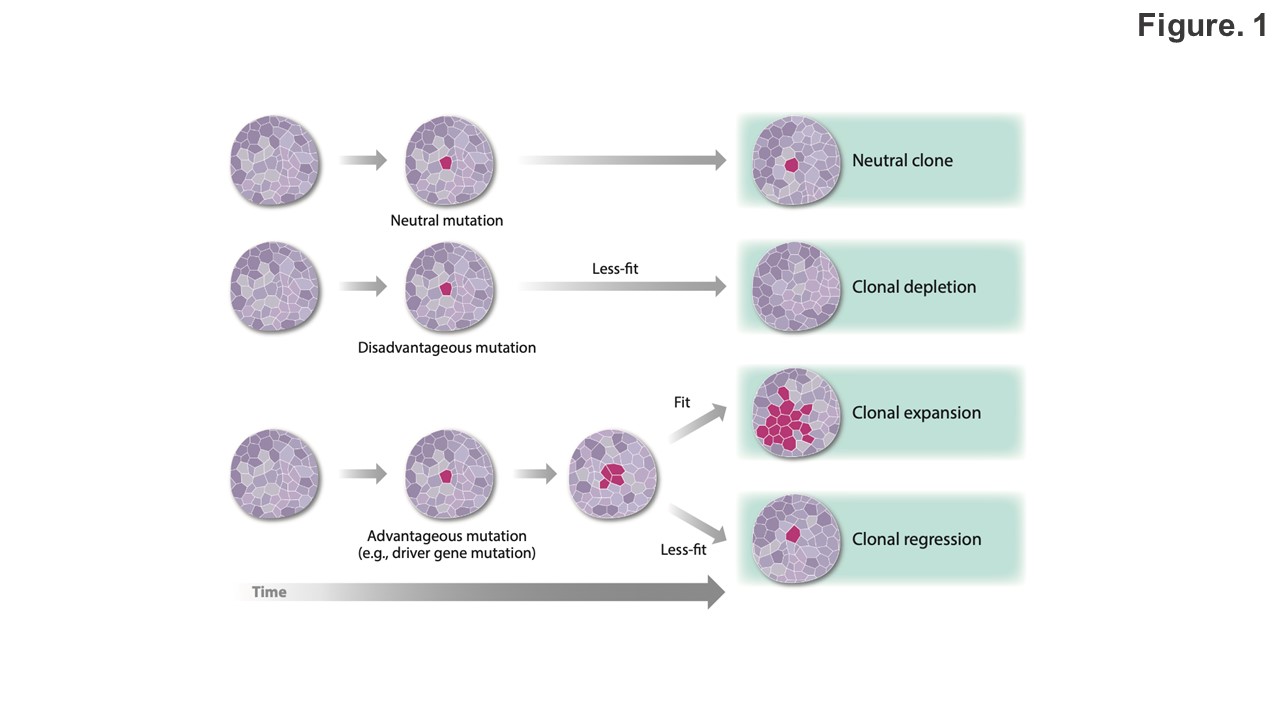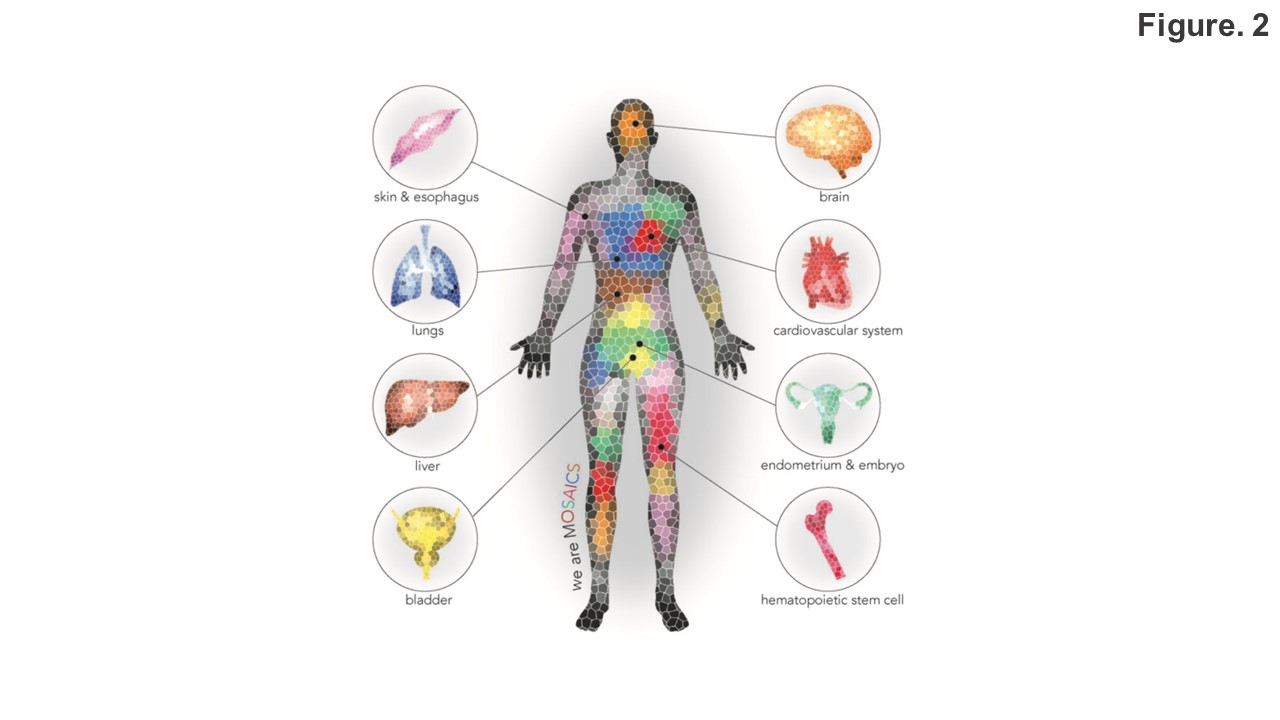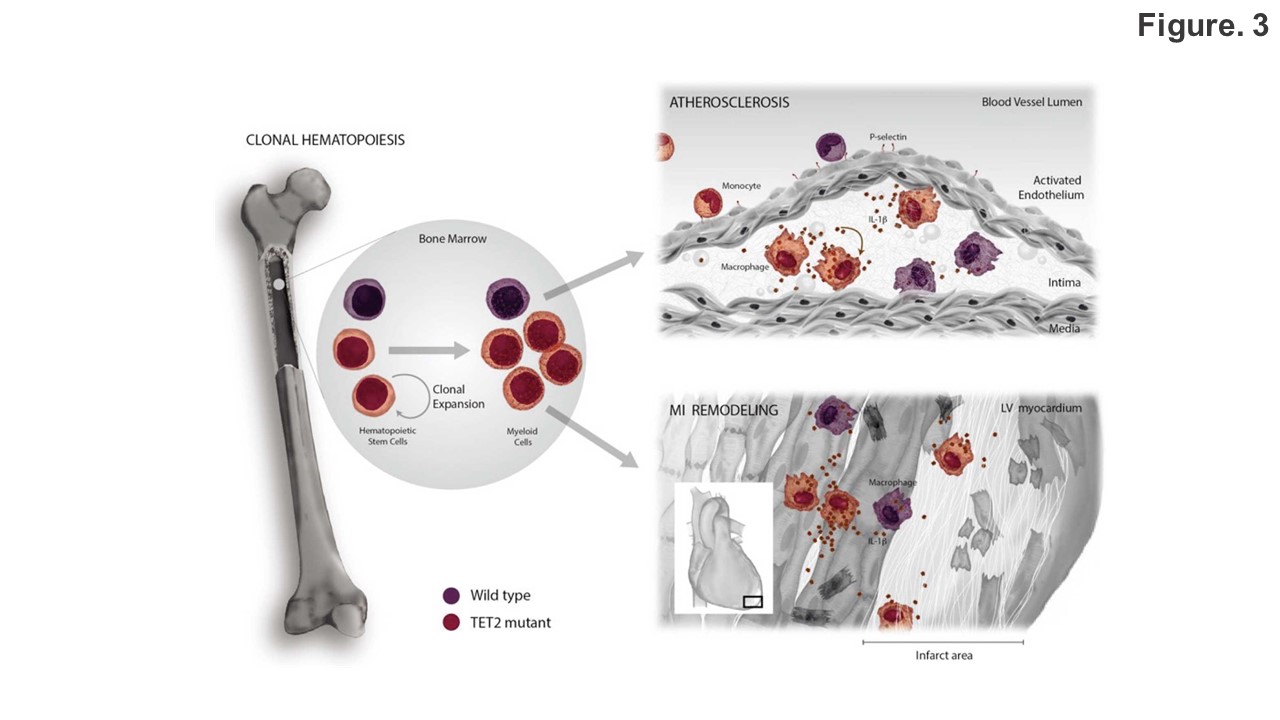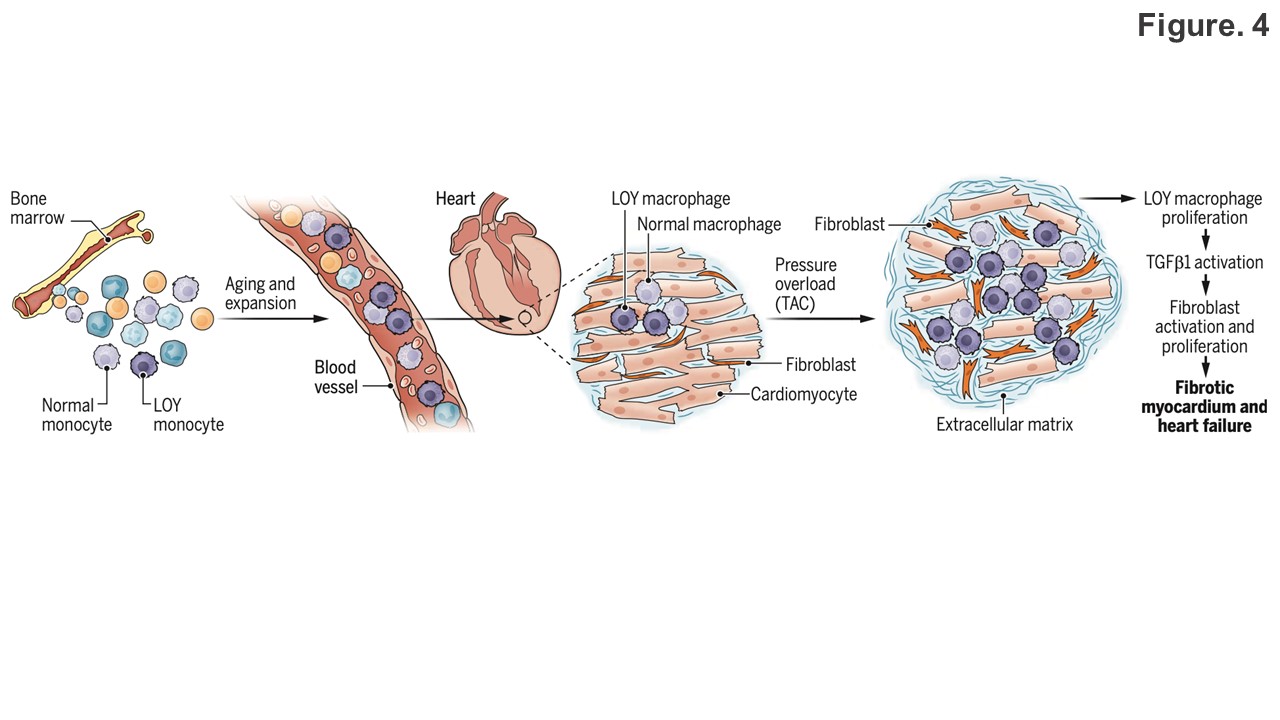Research Institute
Laboratory of Cardiovascular Mosaicism
Member
| Independent Director | Soich Sano (MD, PhD) |
|---|---|
| Laboratory Chief | Naofumi Yoshida (MD, PhD) |
| Research Fellow | Shintaro Yoneyama (MD) |
| Part-time Staff | Kana Masuda Kumiko Enomoto |
| Graduated Student | Taiki Kikuchi (MD) |
Ⅰ. Overview
【What is Somatic Mosaicism?】
Somatic mosaicism refers to a condition in which the cells within our bodies carry different DNA. Our bodies are composed of numerous cells, each containing genetic information in the form of DNA. However, not all cells have identical DNA. This is due to mutations, or "scars,"that occur in our DNA during everyday life.
There are various patterns regarding where and how many mutations occur, leading to cells with different DNA. Furthermore, when a mutation occurs in a crucial part of the DNA, the affected cell may become more prone to proliferation, potentially forming a "clone"– a group of cells with the same mutation.
The coexistence of cells with different DNA and clones is known as "somatic mosaicism"or simply "mosaicism."This state can be likened to mosaic art, where various parts come together to create a unique composition.

Figure 1: Mosaicism formation within the body
This illustration shows the gradual increase of mutated cells. As the mutated cells multiply, they carry the same mutation as the original cell, represented here as clones in the same shade of red. When numerous clones and mutated cells form, a mosaic pattern emerges. Adapted from Ogawa H et al. Annu Rev Physiol. 2021.
【Which tissues and organs undergo mosaicism?】
It is known that as we age, mosaicism occurs in various organs and tissues throughout our bodies. Mosaicism is a phenomenon that happens to everyone, making us all, in a sense, "mosaic humans."Particularly, areas with active cell proliferation, such as the skin, intestines, and bone marrow (blood), are more susceptible to mosaicism. The mosaicism of blood is also referred to as "clonal hematopoiesis."

Figure 2: We are all mosaics.
All organs and tissues in our bodies undergo mosaicism due to the formation of numerous clones and mutated cells. Among the mosaics, some, such as clonal hematopoiesis, can exacerbate diseases. Adapted from Sano S et al. Eur Heart J. 2020.
II. Research Achievements Research accomplishments
1. CHIP and cardiovascular diseases
Clonal hematopoiesis is a phenomenon caused by various genetic mutations, particularly involving the DNMT3A, TET2, and ASXL1 genes, which are known to cause blood cancers. Clonal hematopoiesis resulting from these mutations is referred to as CHIP (clonal hematopoiesis with indeterminate potential).
Our research has revealed that CHIP is involved in the progression of cardiovascular diseases, such as atherosclerosis and heart failure. Clonal hematopoiesis may also exacerbate various other diseases, including cancer, lung diseases, and liver diseases.
In individuals with clonal hematopoiesis, mutated blood cells are more prevalent in their blood vessels. It is believed that these mutated cells infiltrate the arterial walls and the heart, worsening the diseases. Specifically, the mutated blood cells can intensify inflammation in the affected area and cause fibrosis, which hardens the tissue, ultimately leading to a decline in organ function.

Figure 3: CHIP exacerbates heart failure
Hematopoietic stem cells with advantageous mutations proliferate like clones. These mutated white blood cells can exhibit different properties than normal ones. For example, macrophages with Tet2, Dnmt3a, and JAK2 gene mutations are known to exhibit increased expression of pro-inflammatory cytokines and chemokines. This leads to the worsening of heart failure. Adapted from Sano S et al. Circ J. 2018.
2. Loss of Y chromosome and cardiovascular diseases
The complete loss of the Y chromosome in blood cells is a common phenomenon in men and is referred to as mosaic loss of Y chromosome (mLOY). The occurrence of mLOY in blood increases with age, and it is estimated that about half of 70-year-old men have some degree of mLOY.
Epidemiological data suggest that men with mLOY have a shorter life expectancy and are more susceptible to age-related diseases such as Alzheimer's, cancer, and cardiovascular diseases. Recent studies have also shown that the progression of COVID-19 worsens in men with mLOY. However, it was unclear whether mLOY is the "cause"of these diseases or just one of the phenomena that occur with age.
Our research team has created mice to investigate the effects of mLOY using gene-editing technology (CRISPR/Cas9). As a result, we found that in mice with mLOY, the fibrosis, a disease that gradually hardens organs such as the heart, lungs, and kidneys, progressed. Blood cells (macrophages) lacking the Y chromosome have a stronger propensity to cause fibrosis than normal cells, which is considered one of the causes. This research has clarified the role of mLOY and its causal relationship with diseases.

Figure 4: Y chromosome-deficient monocytes/macrophages exacerbate heart disease
With aging, blood cells lose the Y chromosome. Monocytes/macrophages lacking the Y chromosome are suggested to cause fibrosis in various organs. In our research, we focused particularly on fibrosis and heart failure in the heart. Adapted from an editorial by Zeiher A et al. Science. 2022
III. Selected Publications
1. Sano S et al. Physiology. 2023. (Full Paper)
2. Sano S et al. Curr Opin Cardiol. 38(3):201-206. 2023. (Full Paper)
3. Sano S et al. Science. 377(6603):292-297. 2022. (Full Paper)
4. Ogawa H, Horitani K. Sano S. Annu Rev Physiol. 10;84:113-133. 2022. (Full Paper)
5. Wang Y, Sano S, Ogawa H et al. Cardiovasc Res. 118(6):1413-1432. 2022. (Full Paper)
6. Sano S, Walsh K. J Cardiovasc Aging. 2021;1:5. 2021. (Full Paper)
7. Ogawa H, Sano S, Walsh K. Int J Phys Med Rehabil. 9(1):582. 2021. (Full Paper)
8. Sano S et al. JCI Insight. 8;6(13):e146076. 2021. (Full Paper)
9. Yura Y et al. Circ Res. 3;129(6):684-698. 2021. (Full Paper)
10. Chavkin NW, Sano S, et al. J Am Heart Assoc. 6;10(13):e019904. 2021. (Full Paper)
11. Park E et al. J Vis Exp. (171):10.3791/61875. 2021.(Full Paper)
12. Evans MA, Sano S, Walsh K. Eur Heart J. 42(3):266-268. 2021.(Full Paper)
13. Fuster JJ et al. Cell Rep. 27;33(4):108326. 2020. (Full Paper)
14. Wang Y, Sano S, Yura Y et al. JCI Insight. 26;5(6):e135204. 2020. (Full Paper)
15. Yura Y, Sano S, Walsh K. JACC Basic Transl Sci. 24;5(2):196-207. 2020. (Full Paper)
16. Sano S, Wang Y, Walsh K. Eur Heart J. 41(30):2904-2907. 2020. (Full Paper)
17. Evans MA, Sano S, Walsh K. Annu Rev Pathol. 15:419-438. 2020. (Full Paper)
18.Sano S et al. JACC Basic Transl Sci. 18;4(6):684-697. 2019. (Full Paper)
19. Sano S et al. J Vis Exp. (152):10.3791/59977. 2019. (Full Paper)
20. Wang Y, Sano S et al. Circulation. 140(6):487-499. 2019. (Full Paper)
21. Anzai A et al. J Exp Med. 216(2):369-383. 2019. (Full Paper)
22. Sano S, Wang Y, Walsh K. Circ J. 83(1):2-11. 2018. (Full Paper)
23.Sano S et al. Circ Res. 123(3):335-341. 2018. (Full Paper)
24.Sano S, Oshima K et al. J Am Coll Cardiol. 71(8):875-886. 2018. (Full Paper)
25. Fuster JJ et al. Science. 355(6327):842-847. 2017. (Full Paper)
IV. Other Information
• Our research results were featured in the New York Times: https://www.nytimes.com/2022/07/14/health/y-chromosome-heart-failure.html
• An article on Director Sano was published in "Japanese Researchers in Science": https://www.cvrc.virginia.edu/Walsh/files/science-2022-walsh.pdf
• We released a press release about our research results from Osaka Prefecture University: https://www.omu.ac.jp/info/research_news/entry-01481.html
• Our research results were chosen for the cover of Circulation Research journal: https://www.ahajournals.org/cms/asset/73b0eb17-8934-4a33-acb9-c824aab8ffbd/res.2018.123.issue-3.largecover.png
• An interview with Independent Director Sano was published in the "Meet the First Authors"section of the Circulation Research journal: https://www.ahajournals.org/doi/epub/10.1161/RES.0000000000000219
V. Future Perspectives
Somatic mosaicism is not limited to blood; mosaicism occurs in various parts of the human body. The impact of non-blood mosaicism on cardiovascular diseases and other illnesses remains to be elucidated. The Laboratory of Cardiovascular Mosaicism continues to study clonal hematopoiesis while also investigating the relationship between non-blood mosaicism and cardiovascular diseases.
The Laboratory of Cardiovascular Mosaicism is actively seeking collaborators to advance our research. If you are interested, please feel free to contact us (sano.soichi@ncvc.go.jp).
Let's work together to revolutionize future medical care and contribute to a healthier society. We look forward to hearing from you.
last updated : 2025/04/17
